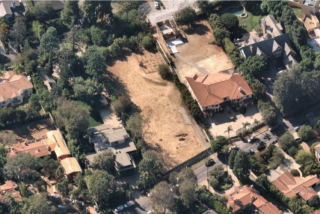Filling In the Blanks
In the pre-computer epoch, when writers could still enjoy the benefits of jammed typewriter keys, carbon paper smudges and Wite-Out fumes, the most terrifying sight in the world was a blank sheet of bond paper. It sat there in the roller and just . . . stared at you. Smug, soulless, inscrutable, taunting. The temptation was to simply avoid the writing effort altogether and just rip the thing out of the machine and crumple it up before you botched it for sure by trying to actually put words on it.
Then came the computer and the plague of the blinking cursor. Now, writers not only have to contend with a blank screen, but with an evil little cube winking balefully at them, an implacable metronome ticking off the seconds until deadline. This is progress.
There is something about the blank canvas, the block of freshly quarried marble, the tabula rasa, that spooks most people. Michelangelo may have had that mysterious ability to look at the raw stone and simply chip away everything that didn’t look like David but, to the rest of us, it just looks like so much heavy rock. We’re afraid that we’ll take a few tentative whacks at it and ruin the whole thing forever.
The work of the landscape architect or contractor, to me, is just as enigmatic. How can some guy stroll into the back yard of a freshly built house--filled with great clods of dirt, lumber remnants, odd bolts, shavings and construction effluvia--and visualize a miniature version of Kew Gardens?
How can he or she see beauty and symmetry--bedding plants here, above-ground planters there, flowing water and rolling brick walks and shady patios and graceful trees--where the rest of us see a trash bin.
That’s the landscape contractor’s stock in trade: the skill to create something from, technically, nothing.
“We have no products,” said Rich Jark, chairman of the board of the Long Beach/Orange County chapter of the California Landscape Contractors Assn. (CLCA). “We have to invent a product every time we go out. The members of our association are licensed to build structures and facilities, which can be just about everything outside of a house and short of a swimming pool.”
This means, among other items, patios, concrete and masonry work, draining systems, lighting, outdoor barbecues, kitchen facilities, irrigation systems and, of course, greenery.
“We call the plants the icing on the cake,” Jark said. “There are a lot of layers of cake underneath that icing.”
The best of last year’s work by CLCA members in the Long Beach/Orange County area will be honored tonight at the association’s annual Beautification Awards. The awards program at the Hyatt Newporter hotel in Newport Beach will spotlight work culled from more than 120 entered projects in 32 commercial and residential landscaping categories.
To win, the contractors not only have to be good, they have to be licensed by the state Board of Consumer Affairs. The distinction, CLCA spokeswoman Linda Knoche said, is worth noting.
Legally, unlicensed contractors can’t be held accountable for poor workmanship or unfinished projects, and “a major portion of complaints to the state Contracting Board pertains to landscape contractor problems,” she said.
The CLCA acts as a kind of clearinghouse and referral service for licensed landscape contractors. The number of the local chapter is (714) 847-3644.
A landscape contractor, Jark said, attacks a job in the same way a military general would if he had his way: from the front and the back. For the front yard, he said, the trick is “to define an entryway, make a pleasing approach that welcomes people to the home.”
The back yard, he said, should be “based on outdoor living in Southern California. We have to treat the individual family’s lifestyle and makeup and try to create functional use areas for every member of the family.”
The best work is done, he said, when the contractor avoids “zeroing in on one part of the project, one little planter, and treating it as the whole project. Then you’ll end up with what I call the mechanical garden look.”
A better idea, Jark said, is to “try to integrate materials off the house into the landscape project. Then the house and the landscape are interlocked with certain materials.”
A look at a few of the entries in this year’s Beautification Awards competition shows that Jark is right--the landscape seems to somehow grow out of the house. You can tell where the house ends and the landscaping begins, but the distinction is pleasantly fuzzy.
Which means, I suppose, that the contractors aren’t working with the equivalent of the blank sheet of typing paper or a sculptor’s block after all. That sort of makes the house the architectural equivalent of that best of all openers: “It was the best of times; it was the worst of times.”
And we all know how that one turned out.
More to Read
Sign up for our Book Club newsletter
Get the latest news, events and more from the Los Angeles Times Book Club, and help us get L.A. reading and talking.
You may occasionally receive promotional content from the Los Angeles Times.








